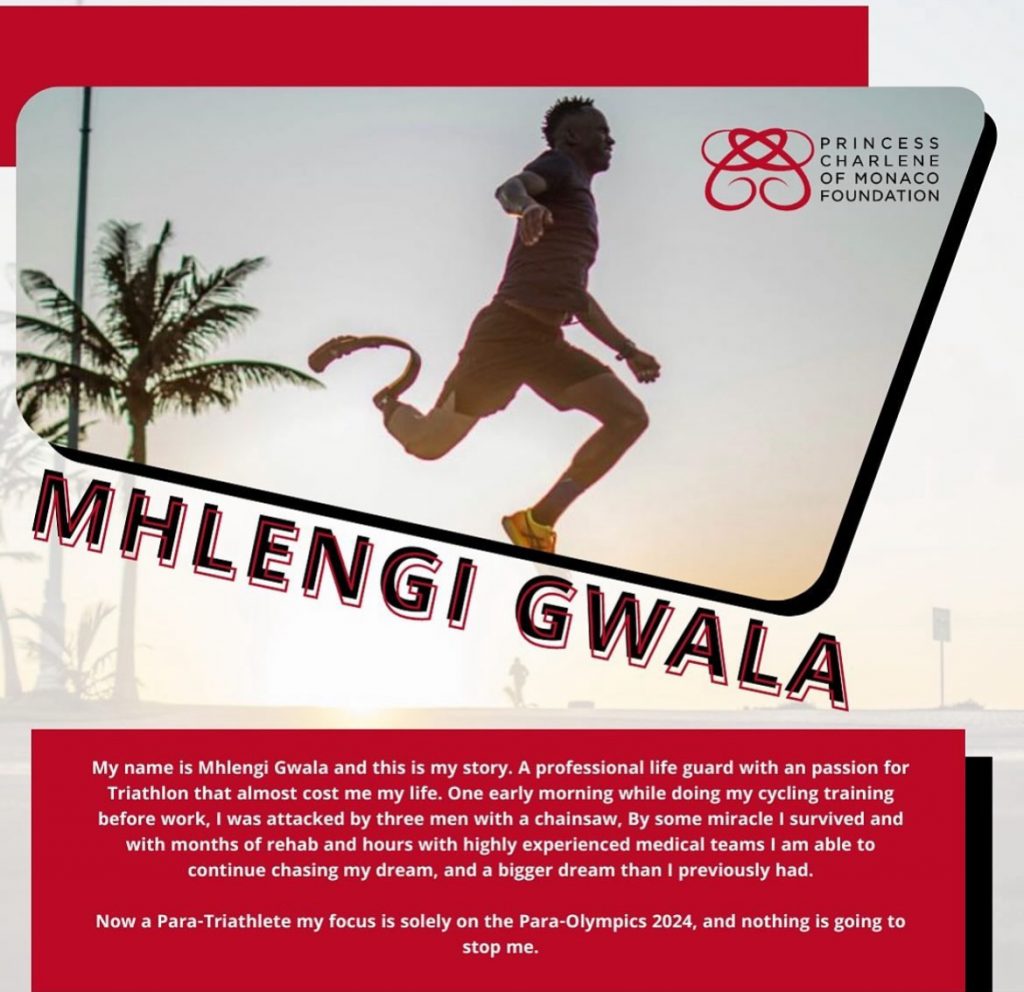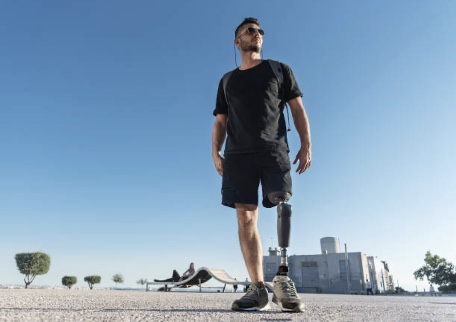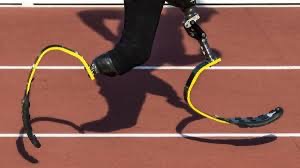A backstory…

When I was young, my Granny lost her arm to amputation. Since then, I’ve watched her struggle, relearn, and grasp the basic skills to be able to live an almost normal life again. I’ve always been proud of how she reshaped her life, and since mine revolves so much around sports, I couldn’t imagine coping with a lost limb. This is until I met South African elite para-triathlete, Mhlengi Gwala. He told me about his backstory how he tragically lost his leg and the work he’s done to get to where he is today. I instantly became fascinated with the rehabilitation he endured so I explored deeper into it.
A short video on Mhlengi Gwala’s Backstory.
The Road to Recovery
Prediction times for the return to sport after amputation were studied by Matthews et al. I learnt that it’s hard to give an exact period on how long amputation recovery will take, let alone getting back into sports. This is due to factors like what limb was amputated, stump length, the cause, and sport. Think about when you were a baby, you learnt to walk before you learnt to run. The same idea applies to athletes with leg amputations. According to Pam Health, there’re 3 main components to the healing process:
- Physical therapy and rehabilitation

During surgery, all unwanted parts of the bone and muscles are removed, and the healthy muscle is reattached to the remaining bone. The amputees need to rebuild strength and flexibility within these muscles and learn to use their prosthetic (if one’s needed) with the help of physiotherapists and rehabilitation teams.
- Managing the risk of complications
Commonly, amputees will run into complications during recovery. These include things like infection, stump pain, phantom pain, etc, which require additional treatment.
- Gaining mobility and independence
Lastly, when the amputee becomes confident enough with the new adjustments, they’re able to live independently. In Mhlengi’s case, he knew that he wanted to get back to racing, and I believe that having something to work towards helped him through recovery and to become a new upcoming para-triathlete.
Is the Price of Sporting Prosthetics Fair?
I mentioned that I was studying biomedical engineering to Mhlengi, who replied “You’re going to be rich, these aren’t cheap”. According to Alan Hutchison, a leg prosthetic can cost up to $60,000. Shocked, I researched why, looking specifically at running prosthetics. A para-athlete with a leg amputation will generally have two different prosthetics because when running or jumping, you’re applying a larger impact force onto your legs. The sporting prosthetic must be able to withstand this, therefore it’s constructed into a curve using carbon fibre and custom-made to fit the stump depending on size, shape, and whether the amputation occurred above or below the knee. Taking these into account, it makes sense why the prosthetic is expensive but it’s still debatable whether this price is too high, especially for someone who’s already faced tragedy. Luckily for Mhlengi, he had many supporters on his side who helped him get to where he is today.
Summary
I’ve always respected para-athletes for what they do, but I’ve never appreciated the process they endure to be able to do these things. Through this research, I’ve realised that “getting back on your feet” takes a lot of patience, not only through rehab but also in acquiring the prosthetic to begin with, however, it’s amazing what can be achieved when you’re driven by the things you love.


